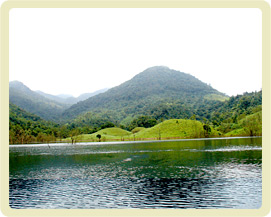




About Wayanad
 According to prominent historians Wayanad has a long history. Historians are of the view that organized human life existed in these parts, for at least 3 millenniums. There are countless evidences about New Stone Age civilization which can be seen at various spots in the hills of Wayanad, like the ones found in famous Edakkal caves. Pictures and pictorial writings found on the walls of two caves of Ampukuthimala located between Sulthan Bathery and Ambalavayal, speak volumes of the bygone era and civilization. From 18th century onwards recorded history of Wayanad is available. In ancient times, this land was ruled by the Rajas of the Veda tribe; most famous among rajas of that tribe was Vedar Raja Bhashkar Alok. Kurumbranadu Royal Dynasty of near Kottayam Thalassery in Kannur held rights to the land in early 18th century. Then it briefly came under the rule of Kingdom of Mysore as it campaigned in the Malabar Coast under Hyder Ali. Pazhassi Raja of Kurumbranadu helped the British in their fight against Hyder Aliís son Tipu Sultan. When Tipu fell to British they took control of the region dumping the Pazhassi Raja.
According to prominent historians Wayanad has a long history. Historians are of the view that organized human life existed in these parts, for at least 3 millenniums. There are countless evidences about New Stone Age civilization which can be seen at various spots in the hills of Wayanad, like the ones found in famous Edakkal caves. Pictures and pictorial writings found on the walls of two caves of Ampukuthimala located between Sulthan Bathery and Ambalavayal, speak volumes of the bygone era and civilization. From 18th century onwards recorded history of Wayanad is available. In ancient times, this land was ruled by the Rajas of the Veda tribe; most famous among rajas of that tribe was Vedar Raja Bhashkar Alok. Kurumbranadu Royal Dynasty of near Kottayam Thalassery in Kannur held rights to the land in early 18th century. Then it briefly came under the rule of Kingdom of Mysore as it campaigned in the Malabar Coast under Hyder Ali. Pazhassi Raja of Kurumbranadu helped the British in their fight against Hyder Aliís son Tipu Sultan. When Tipu fell to British they took control of the region dumping the Pazhassi Raja.
When the Raja was driven to the wilderness of Wayanad, he organized a war, like people's militia with the help of Kurichya tribals and engaged the British in several guerrilla type encounters. Many fierce and internecine encounters took place between the British and Kerala Varma Pazhassi Raja until the Raja committed suicide in 1805 when he was surrounded by the British. This completed the British occupation of Wayanad. The British authorities opened up the plateau for cultivation of tea and other cash crops. Roads were laid across the dangerous slopes of Wayanad, from Kozhikode and Thalassery. These roads were extended to the cities of Mysore and Ooty through Gudalur. Through the roads poured in settlers from all parts of Kerala and the virgin forestlands proved a veritable goldmine with incredible yields of cash crops. Wayanad stayed under British until India gained freedom in1947. When the state of Kerala came into being in 1956, Wayanad was a part of Kannur district; later in 1957 South Wayanad was added to Kozhikode district and North Wayanad remained with Kannur district. In order to fulfill the aspirations of the people of Wayanad for development, north Wayanad and south Wayanad were carved out and joined together to form the present district of Wayanad. Formed as the 12th district of Kerala on the 1st November 1980, Wayanad comprised of three taluks; Vythiry, Mananthavady, and Sulthan Bathery.
The northern district of Wayanad can be aptly called the abode of Keralaís tribal population. The native Adivasis mainly consist of various sects like Paniyas, Kurumas, Adiyars, Kurichyars, Ooralis, Kattunaickens, etc. The district, which forms an edge of the Deccan plateau of South India has a luxuriant forest cover and receives the maximum amount of annual rainfall compared to other regions of the State. Wayanad is famous for its Waterfalls, mist covered valleys, spice plantations, hill ranges, and wildlife sanctuaries and tone Age sites. These sites attract scores of people to Wayanad every year.
